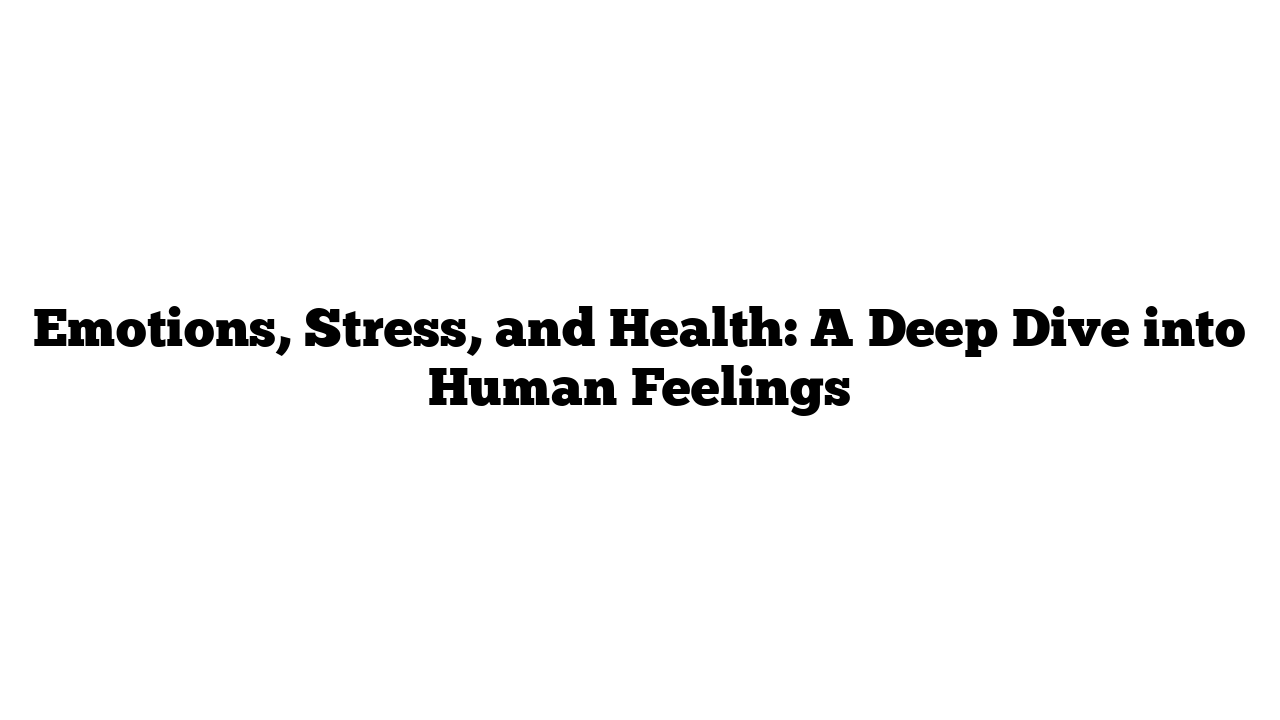Did you know that astronauts in space struggle to communicate without words because their weightless bodily fluids cause their faces to puff up, making emotions hard to read? Or that Botox can actually improve your mood—not just by smoothing out wrinkles but by easing symptoms of depression? Interestingly, in the USA, a “come here” gesture is friendly, but in the Philippines, it can be considered so rude that it could land you in trouble!
These facts highlight just how strange and powerful emotions are. They are not just fleeting psychological experiences; they have tangible effects on our health and well-being. The emotions we experience can be contagious, influencing not just our own bodies but also those around us. This is true whether we are feeling joy or dealing with more challenging emotions like fear and anger.
The Power of Emotions
Research shows that individuals with a positive outlook tend to live longer, healthier lives compared to those who are more negative. On the flip side, chronic negative emotions can lead to stress, which has the potential to harm our health in various ways.
Understanding Emotional Expression
Most of us are surprisingly good at reading non-verbal cues and facial expressions. Psychologist Paul Ekman suggests that facial expressions are universally understood across cultures. Whether you’re from Greece, Britain, or the USA, you can generally identify basic emotions like happiness, sadness, anger, fear, and surprise just by looking at someone’s face.
This understanding goes both ways: our facial expressions can influence our emotional states, too. This is known as the Facial Feedback Hypothesis. For instance, smiling—even when you’re not happy—can lift your mood. In fact, a clinical trial has shown that Botox injections might lessen depression because it’s harder to feel down when your facial muscles can’t frown.
How Many Emotions Are There?
So, how do we categorize emotions? In the 1970s, psychologist Carol Izard identified ten basic human emotions that appear from infancy. These are:
- Joy
- Surprise
- Sadness
- Anger
- Disgust
- Contempt
- Shame
- Fear
- Guilt
- Interest or Excitement
Some psychologists propose adding “pride” and “love” to this list, but Izard contends that these are combinations of the original ten.
The Two-Dimensional Model of Emotions
Today, some psychologists describe emotions using a two-dimensional model, where emotions are represented on a spectrum. One axis represents valence (positive or negative), while the other represents arousal (high or low excitement). For example, feeling ecstatic when reading a thrilling story like Harry Potter reflects high arousal and positive valence. Conversely, feeling lethargic while reading a heavy narrative might signify low arousal and negative valence.
Stress: A Reaction to Life
Stress is something we all experience, often on a daily basis. It can build up slowly or strike suddenly. Psychologists define stress as a response to challenging or threatening events, known as stressors. Stress is not technically an emotion; rather, it’s a reaction to disruptions in our lives.
Categories of Stressors
Stressors can be categorized into three main groups:
- Catastrophes: Large-scale unpredictable events such as natural disasters or wars.
- Significant Life Changes: Events like moving, having a child, or losing a loved one.
- Daily Hassles: Everyday inconveniences like traffic jams or work deadlines.
Each of these can trigger your sympathetic nervous system, initiating the fight-or-flight response. In moderate amounts, stress can be beneficial, keeping us alert and focused, especially during challenging situations like exams.
Chronic Stress and Its Effects
However, chronic stress can wreak havoc on your body and mind. Research shows that children who experience abuse are at a higher risk for chronic diseases, and individuals suffering from post-traumatic stress disorder (PTSD) often face heightened rates of various health issues, including digestive and respiratory problems.
The Autonomic Nervous System
The body’s basic functions—like blood pressure and digestion—are regulated by the autonomic nervous system. Chronic stress activates the sympathetic side of this system, which prepares the body for immediate action, but it can also disrupt normal functions, including digestion.
When you experience stress, your body prioritizes blood flow to your muscles and brain, diverting it away from your digestive organs. This can lead to gastrointestinal issues, creating what many refer to as the “brain-gut connection.”
Stress and Heart Disease
Stress is a significant risk factor for heart disease in North America, contributing to elevated blood pressure and cholesterol levels. When the body is under stress, it can impede the liver’s ability to filter fat and cholesterol, leading to cardiovascular issues.
One study highlighted this connection by monitoring male tax accountants, finding that their cholesterol and clotting rates increased dramatically during the stressful weeks leading up to tax day.
Pessimism and Depression
Chronic negative emotions, like pessimism and depression, are closely linked to stress and can further affect heart health. Studies have consistently shown that individuals characterized by optimism and positive feelings tend to enjoy longer, healthier lives compared to those who are more negative.
Managing Your Emotions
In the end, while stress may not directly cause diseases, it is often intertwined with our emotional states. Learning to manage your emotions is essential for maintaining health. It’s crucial to appreciate your feelings without letting them dominate your life.
So, take a deep breath and embrace your emotions. Remember, understanding your emotional landscape is key to fostering a healthier, happier life.
For more insights on health and wellness, visit medicaltimes.io.
